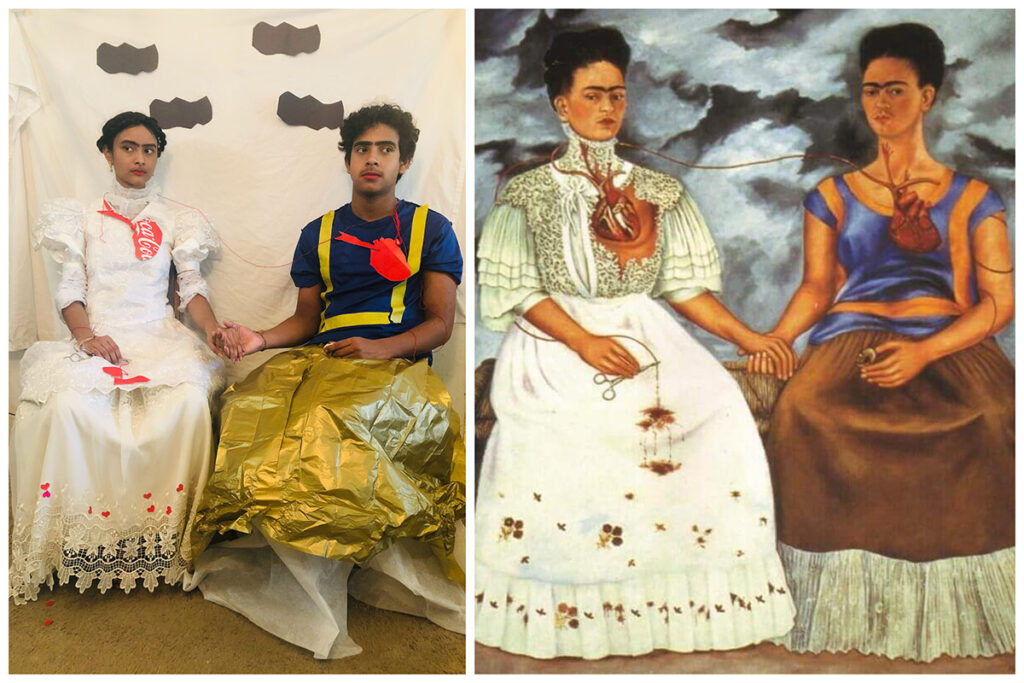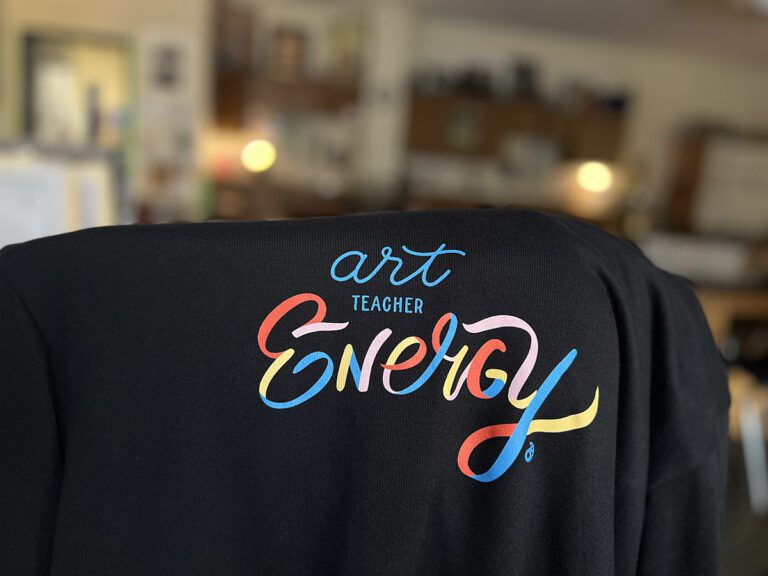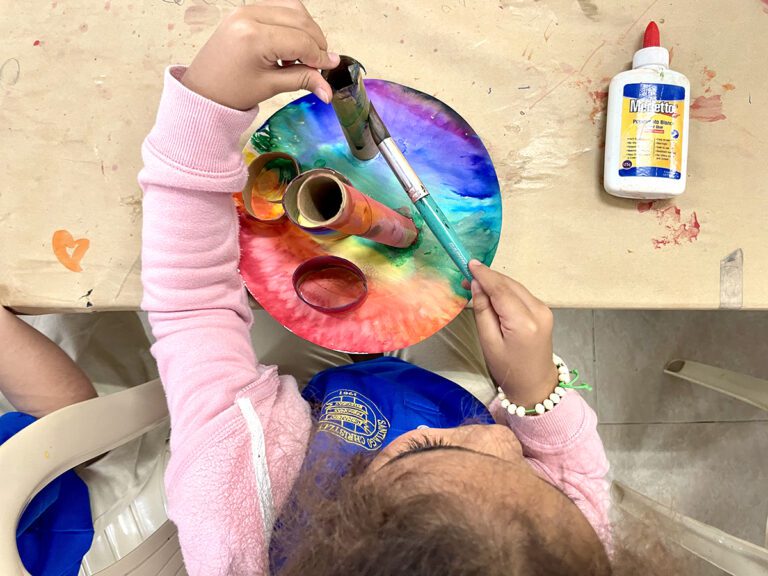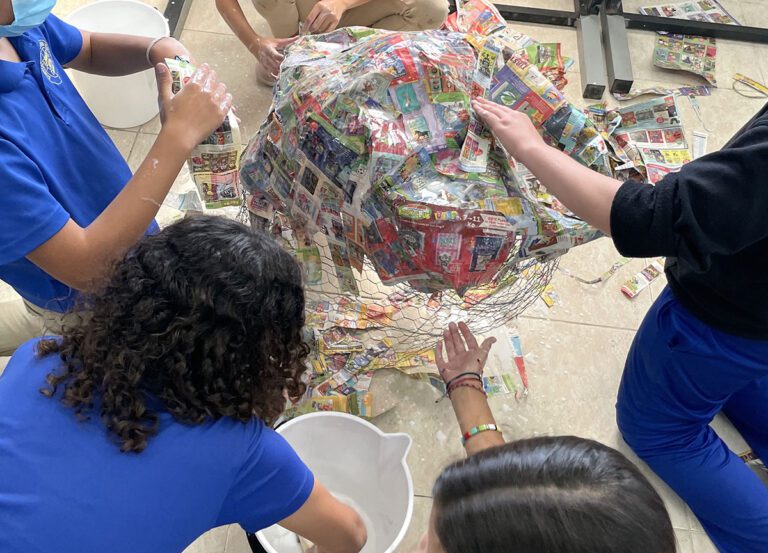Have you ever assigned summer artmaking activities to your high schoolers only to come back in the fall to hastily thrown together, subpar work? Unfortunately, we have all been there!
One solution is to get rid of summer homework. While this makes our grading life a lot easier, it is not in the best interest of our students. Another solution is to accept crummy artworks, but compromising our standards is also not in the best interest of our students!
Summer assignments are beneficial for many reasons. They prepare students for the upcoming school year and course. The work keeps students’ creative critical-thinking brains fresh and their habits disciplined. It gives your students time to chew on certain ideas, even if it’s not the primary focus of their thinking all summer.
Let’s explore 8 low-pressure summer assignments your high school students will be pumped to complete!
As you read through the following ideas, think about which ones your students would be most excited about!

1. Visit a museum or gallery.
Nothing beats seeing art in person, especially for a generation of students used to viewing everything on a screen. Students can make a day trip to many large art museums —alone, as a group, or with their family. If you do not have any close by, smaller art galleries are another option. If in-person art viewing is not available, many museums are creating interactive virtual spaces where students can participate.
Provide students with a “cheat sheet” of museum choices, visitor information, and key artworks to investigate so they get the most out of their visit. Assign nothing but visiting the museum and looking at artwork. If you require “proof” from your students for a grade, have them take a selfie in front of their favorite piece.
Check out this podcast for 5 Ideas and 5 Museums for Virtual Tours.
2. Interview an artist.
Students can reach out to an artist through a local gallery, college or university, email, or artist website. Students can also reach out to an artist via social media and direct messages! Let students select the communication channel to keep it stress-free.
Give students a list of tips for reaching out to an artist. As a class, students can brainstorm a list of suggested questions before parting for the summer. Students can present what they learned in various formats—video reflection, interview video, written format, podcast, or a formal presentation.

3. Destroy a canvas.
This is an unusual one, but it creates an opportunity for innovative artmaking in the future! Invite students to destroy a canvas, board, or piece of paper. Then, when students come back in the fall, they have to use the destroyed material and transform it into a new artwork.
Check out this portrait lesson that synthesizes media for ideas on incorporating and manipulating materials in new ways. Just make sure students practice safety when destroying their canvas!
4. Write a movie review.
Who doesn’t love sitting around and binge-watching a good movie or show? Students select an art-related movie or show to watch and write an informal movie review. Check out 24 Movies to Show in Your High School Art Room for title ideas.
Or peruse this list to get you started!
- Black Art: In the Absence of Light
- This is a Robbery: The World’s Biggest Art Heist
- Saving Banksy
- Struggle: The Life and Lost Art of Szukalski
5. Participate in the Getty Challenge.
The Getty Challenge was an amusing form of entertainment and way of experiencing famous works of art during quarantine last year. People recreated artworks with household items, pets, and family members from the comfort of their own homes. The results were hilarious!

Prepare a list of famous artworks for your students. Alternatively, allow students to select their own artwork based on their body of work. Students recreate the artwork using found items in their homes. This is a great opportunity to discuss appropriation with your students!
6. Attend a conference.
While our students love us, sometimes they enjoy hearing from others, too. Other artists, teachers, and students can share things in new ways. They can also teach content outside our personal expertise. Ask students to attend a conference or workshop over the summer. They could also sign up for a class at a local community college, arts center, or arts council. Preemptively reach out to these institutions and see if they will offer your students a discount. It doesn’t hurt to ask!
Have you thought about hosting a few speakers for your students to learn from this summer? Listen to A Conference to Inspire Your Students to hear how Lena Rodriguez created a conference for her students.
7. Curate a virtual exhibit.
Virtual art shows are all the rage right now! Have students curate a virtual exhibit and then “tour” each others’ spaces when they return in the fall. Students often surprise themselves as they get sucked into designing their gallery spaces. It’s a lot of fun to see what quirky items and props they include.

The work showcased can fit one of these parameters:
- Student’s theme of their body of work
- A specific era, time period, or art movement
- Common subject matter
- A specific culture or group of people
- Student’s portfolio of artwork
- Similar mediums or use of materials
For more information on platforms to use, take a look at Creating a Virtual Art Show: A Time Capsule of Student Success and 6 Online Platforms to Showcase Student Art.
8. Read 10 children’s books.
Many high school students do not enjoy reading—except when it comes to children’s books! They get excited when a children’s book gets pulled out in the middle of a lesson.
Invite students to find and read ten children’s books on a topic or theme of their choice. The topic or theme can be based on their artistic journey and interests. Students can create a reverse mind map showing how the books stem from the core concept. If that last step seems like a lot of homework, table it for when students come back to class in the fall. Have students snap photos of the books they read so they won’t forget. This activity introduces how to brainstorm with mind mapping. It also starts a conversation about creating a body of work that explores different facets of one focused intent.

As you plan, keep in mind that for summer assignments to be successful and beneficial, they must be fun, low-pressure, accessible to all, and allow choice.
- Fun—We want students to be intrinsically motivated to get the most out of learning. The work shouldn’t feel like work but lean more into exploration and investigation.
- Low-pressure—When intensive homework is given over the summer, students do not have a chance to have a real break. Just like we want to prevent teacher burnout, we also want to prevent our students from burning out.
- Accessible—If assignments have too many requirements, not all students may have access to complete the work. Summer homework can also be optional instead of mandatory. Students should not be penalized for not having transportation, supplies, or the financial means to complete the assignments.
- Allow choice—One way to make summer assignments accessible to all is to provide choice. Students can select an assignment based on their resources. Choice also allows students to select what speaks to their interests and passions, tying it back to the fun component!
For even more summer assignment ideas, check out Fantastic Summer Homework Ideas for High Schoolers.
What is a summer assignment your students love doing each year?
How can you use summer assignments to bridge the end of the school year with the start of the next one?
Magazine articles and podcasts are opinions of professional education contributors and do not necessarily represent the position of the Art of Education University (AOEU) or its academic offerings. Contributors use terms in the way they are most often talked about in the scope of their educational experiences.





